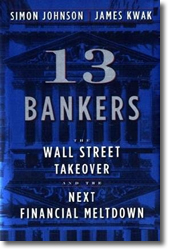Director’s Blog – June 2021
Tuesday, June 8th, 2021This month’s Director’s blog post celebrates an all-too-brief “summer” break for the Fuqua community with a collection of interesting miscellaneous articles. Enjoy some down time!
From the Wall Street Journal
All of the linked articles below require a WSJ.com account which you can create here. Ford Library and Goodson Law Library have co-funded your access to personal accounts on WSJ.com!
- The Olympian Who Turned a Profit on Her Wedding
– June has been the traditional month for weddings, and an Olympic-level triple-jumper brings her financial acumen and discipline to the process. - CFO Journal : Racially Diverse CFOs Are in High Demand, but Challenges Persist
– While minorities already in the executive ranks are seeing more opportunities, it can be difficult for those without C-suite experience to break in, recruiters and finance professionals say. - Pittsburgh Is Losing Black Residents. One Entrepreneur Is Trying to Bring Them Back.
– Venture capitalist David Motley is on a mission to help Black professionals take advantage of city’s rebirth as a center for technology, healthcare and education. - CEO Pay Increasingly Tied to Diversity Goals
– McDonald’s and AmEx are among the companies tying executive compensation to adding women and people of color to leadership ranks
Barrons.com “Extra” – The article below requires a Barrons.com account which is available to Fuqua users courtesy of the Fuqua Career Management Center and a generous donation by Mr. R. Scott Collins (Duke Class of 1993), President, Fiduciary Wealth Advisors.
- Top 10 Most Influential Women in Wealth Management
– Barron’s latest list of 100 Most Influential Women in U.S. Finance includes these 10 leaders in wealth management, including Morgan Stanley’s Carla Harris and Ellevest’s Sallie Krawcheck.
Popular Online Audio and E-Books
The titles below from Overdrive all have lengthy wait periods. If you don’t want to wait that long, let us know and we’ll see if we can purchase additional online “copies”.
- Empire of Pain – audiobook | ebook
– A grand, devastating portrait of three generations of the Sackler family, famed for their philanthropy, whose fortune was built by Valium and whose reputation was destroyed by OxyContin. - Effortless: Make It Easier to Do What Matters Most – audiobook | ebook
– Stuck in an endless loop of “Zoom, eat, sleep, repeat,” we’re often working twice as hard to achieve half as much. Getting ahead doesn’t have to be as hard as we make it. - The Premonition: a pandemic story – ebook
– Michael Lewis’s taut and brilliant nonfiction thriller pits a band of medical visionaries against the wall of ignorance that was the official response of the Trump administration to the outbreak of COVID-19.
 Sinclair, Hugh.
Sinclair, Hugh. 






